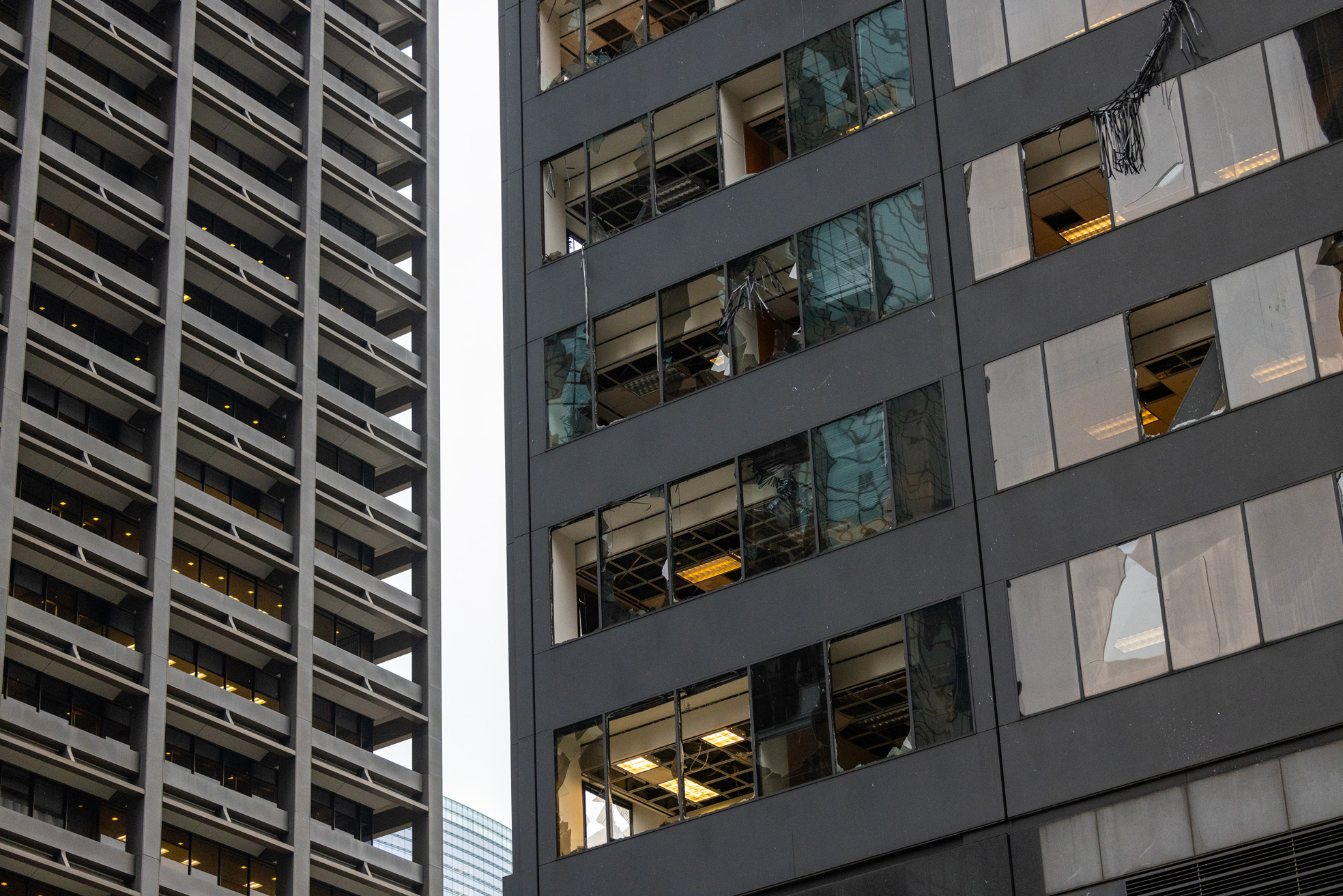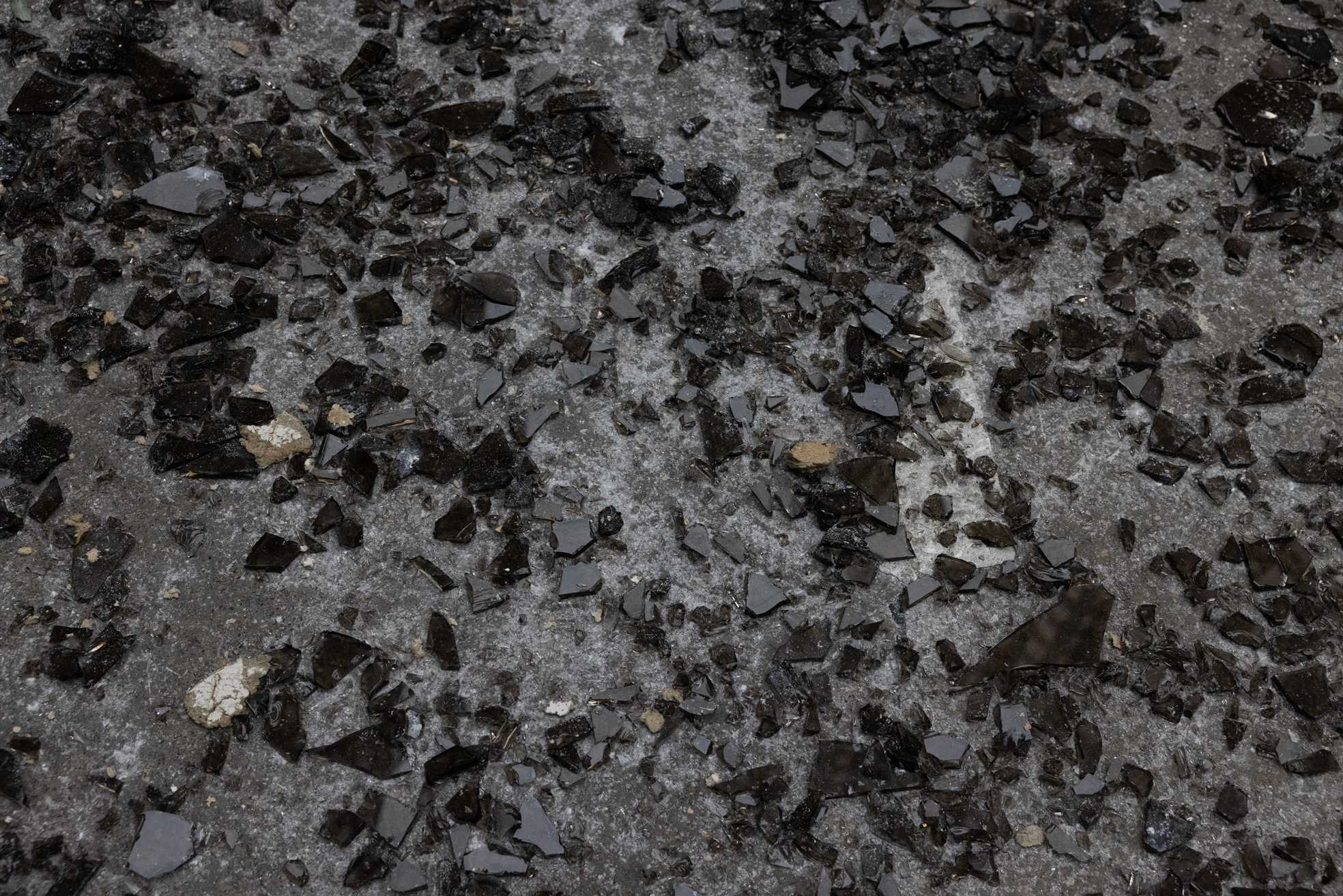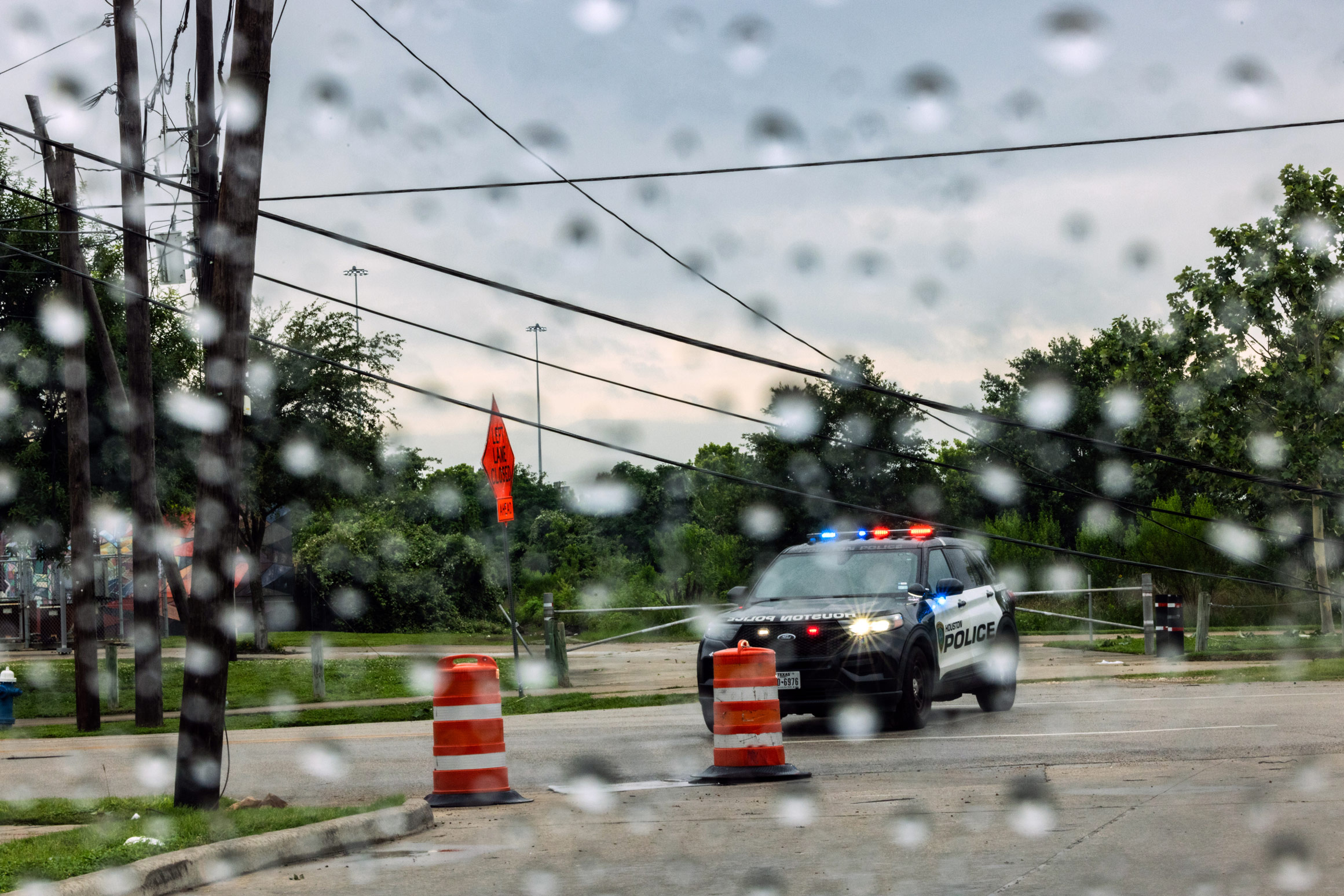|
Getting your Trinity Audio player ready...
|
Houston leaders vowed to prepare for the next big storm after Hurricane Harvey flooded thousands of people out of their homes.
When a rare derecho slammed the region earlier this month, however, officials and residents alike were caught off guard.
Forecasters failed to predict the furious winds. By the end of the day, downtown was littered with glass from broken skyscraper windows. Hundreds of thousands of CenterPoint customers were sweating through power outages that lasted for days. Seniors suffered in “deplorable” conditions at apartment buildings.
The storm added insult to injury for residents who had endured flooding at the start of the month. President Joe Biden soon issued a single disaster declaration for both storms.
The rapid-fire disasters raised a key question about the region’s response to Hurricane Harvey: Have billions of dollars – and endless talk of resilience – help to better prepare Houston?
The derecho represented a vastly different type of natural disaster than the overwhelming rain that accompanied Harvey. Still, Harvey served as a launching point for a broader discussion about storm preparedness in the climate change era.
Some observers said that despite the widespread blackouts and disruptions to everyday life this month, Houston is more ready than it was seven years ago. Still, they cautioned that building stronger houses, better drainage and a hardier grid is a process that could take decades, not years. New building codes do not apply to old structures, and signature projects – like a $2.5 billion flood control bond – remain years from completion.
“It’s a long slog, honestly. Real change takes time,” said Samuel Brody, a professor and director of the Institute for a Disaster Resilient Texas at Texas A&M University.
Making changes
Long a critic of the way Texas prepares for disasters, Brody said he has been pleasantly surprised by many of the changes instituted since Harvey.
Houston and Harris County required new codes requiring higher construction in floodplains. The region has accelerated buying out flood-prone properties. The state now requires home sellers to disclose when their properties lie within the 500-year floodplain.
In 2018, Harris County voters approved a $2.5 billion bond program to improve the region’s drainage.
Over the past five years, CenterPoint Energy says, the utility has invested $1.5 billion into “resiliency-related” infrastructure projects – the need for which was underscored by the massive Winter Storm Uri in February 2021.
Much of the money spent since Harvey, however, has focused on maintenance and repair work, rather than transformative infrastructure projects, one infrastructure professional cautioned.
“That’s not reducing risk. That’s just fixing what was broken,” said Michael Bloom, an engineer and former member of the Harris County Community Flood Resilience Task Force.
Still in the works are a city master stormwater plan, a Harris County flood resilience plan, many of the county's projects funded by the 2018 bond and new flood risk maps slated for release next year, he said. Then, there are much bigger-ticket items, like the so-called Ike Dike, which so far has received only a tiny sliver of the estimated $57 billion in funding it needs.
“From Harvey to now is like a blink of an eye when it comes to infrastructure. It’s just such a short amount of time when it comes to the scale we’re talking about,” Bloom said.

Buyout benefit
Only a few weeks before the derecho, Houston was hit by a different natural disaster. Heavy rains to the north swelled the San Jacinto River’s east and west forks, leading to dramatic scenes of high-water rescues.
That flooding raised the question of whether the money the region has spent on flood mitigation, especially the $2.5 billion flood bond, is producing results.
The Harris County Flood Control District said it has. Since Harvey, the district has done a “tremendous” amount of maintenance work to make sure the river and its tributaries are flowing freely, according to Executive Director Tina Petersen.
During the recent floods, Petersen said, the channels were “working as we want to see them.”
Then there are the buyouts. Those already had begun before Harvey, but have accelerated since. By the district’s calculations, 361 structures did not flood because they already had been purchased and demolished.
While the bond program is nearly six years old, its projects are far from complete. Three years in, only 16 percent of the 181 projects were complete. As of this week, Petersen put the number at about one-third.
Pending projects include at least three near the areas affected by this month’s San Jacinto flooding: the Kingwood diversion ditch, Taylor Gully improvements and a detention basin near Kingwood Park High School.
“The truth is, we can never fully mitigate all the risks,” Petersen said. “Living here in Harris County, we know that. We can’t control the rain, but what we can do is identify the risks and reduce them as much as possible.”

Losing power
After the rain came wind. On May 16, a derecho knocked out power for 922,000 CenterPoint customers in the Houston area. It took nearly a week for the utility to restore power to almost all of them.
In the days that followed, many residents complained about the utility’s scattershot communications on when their power would return.
The utility has not given a full account of how well its newer infrastructure performed compared to older poles and towers. Jim Blackburn, a Rice University professor and co-director of the Severe Storm Prevention, Education and Evacuation from Disaster Center, said he was waiting on a fuller explanation of why the company lost several transmission towers.
“You’ve got to question. If that was because of the construction standards, we’ve got a huge problem. Now, if that was a corroded tower, maintenance had missed it, to my mind that’s a more acceptable explanation,” he said.
One month before the storm, CenterPoint asked the Public Utility Commission of Texas to be allowed to make a capital investment between $2.2 billion to $2.7 billion on storm resilience measures that include system hardening, flood mitigation, and vegetation management.
One major thrust of the plan is replacing outdated transmission structures built to a lower wind standard with more modern, hardened steel or concrete designs.
Those costs would be borne by ratepayers, who already are facing pressure from inflation and rising home insurance premiums. The utility says that overall, the plan would result in a 0.7 percent increase for the average residential customer’s bill.

Losing windows
Along with toppled towers and trees, one of the enduring images of the derecho will be the pockmarked facades of skyscrapers that had windows blown out by the storm. Mayor John Whitmire ordered residents to stay out of a blocks-long “exclusion zone” in downtown.
As bad as the pictures looked, they were not worse than previous hurricanes that passed through Houston, according to structural engineer and University of Houston Professor Joe Colaco, who has checked in on downtown after big storms for decades.

“The shattering was not that much compared to Hurricane Alicia and some of the previous hurricanes. It was mild,” he said.
Colaco said the damage seemed to be concentrated among older buildings whose windows were built to weaker standards. Newer structures, he said, “are built much stronger, much better than before.”
That does not mean that Colaco would not like to see further improvements. He said that as downtown has gotten more crowded, that has contributed to a “wind tunnel” effect putting additional pressures on older buildings.
In the future, Colaco would like to see builders being required to inform the owners of older structures about how new structures will affect them. Still, he noted the window failures did not represent a threat to the buildings’ structural integrity.
Government response
The city’s windows could be tested again this summer during what is predicted to be a highly active hurricane season.
For many Houstonians, the sight of two top executives publicly bickering before the season even begins was a cause for concern. At a recent press conference, Whitmire and Harris County Judge Lina Hidalgo traded words over who would be allowed to address the press.
Former Harris County Judge Ed Emmett, who was defeated by Hidalgo in 2018, said it would be a mistake to focus on such public displays. Behind the scenes, city and county emergency officials are working closely, he said.
“I think it’s important for people to move away from the elected officials a little bit, and pay attention to the professionals that run, not only the Harris County Office of Emergency Management, but also the city,” he said.
While it would be difficult to assess how the many agencies involved in responding to May’s storms performed at one glance, one nonprofit leader said he was impressed by the general attitude after the derecho.
Matthew Marchetti, the co-founder of CrowdSource Rescue, said officials elsewhere sometimes deride his group’s offers of volunteer help after storms.
Not in Houston. Even in the case of one of the issues raised by the storm – seniors abandoned by management in apartment buildings – political officials were quick to react, Marchetti said.
“We have been uniquely pleased about working with the city of Houston. Not that they have done everything perfect, not that we have done everything perfect. But cautiously optimistic is the right word, because at the very least a lot of elected officials have been in front of some of these senior citizens, yelling about it,” he said.
Houston officials said that in light of the issues raised at the senior living facilities, they are creating their own list of apartment buildings that house vulnerable residents. Before the next disaster, the city plans to send out police and code inspectors to ensure that owners are abiding by existing building standards.
“We’re going to go after these folks, we should have zero tolerance for folks like this,” said Steven David, the mayor’s deputy chief of staff. “If you’re a multi-family owner, you have to act like a good owner.”

A bigger conversation
Since Harvey, the Houston region has faced repeated challenges from the freeze to the derecho that seemed to come with little prior warning. That poses a dilemma for government agencies, which face political pressure to respond to threats that already have materialized rather than hypothetical future dangers.
Emmett said a derecho was not something that concerned him before this month.
“Frankly, I had never even heard that term before. I mean, that’s a whole new thing. The Harvey money, everything was done to try to alleviate flooding,” Emmett said.
Houstonians should get used to being surprised, Blackburn said. The myriad challenges underscore how climate change will scramble the region’s historical understanding of the dangers it faces, and the need for a bigger conversation about its dangers.
“We were prepared for a flood, but we got (Winter Storm) Uri,” Blackburn said. “We were prepared for a flood or Uri, then we got a derecho. These curveballs keep coming. It’s sort of like the new norm is curveballs.”


